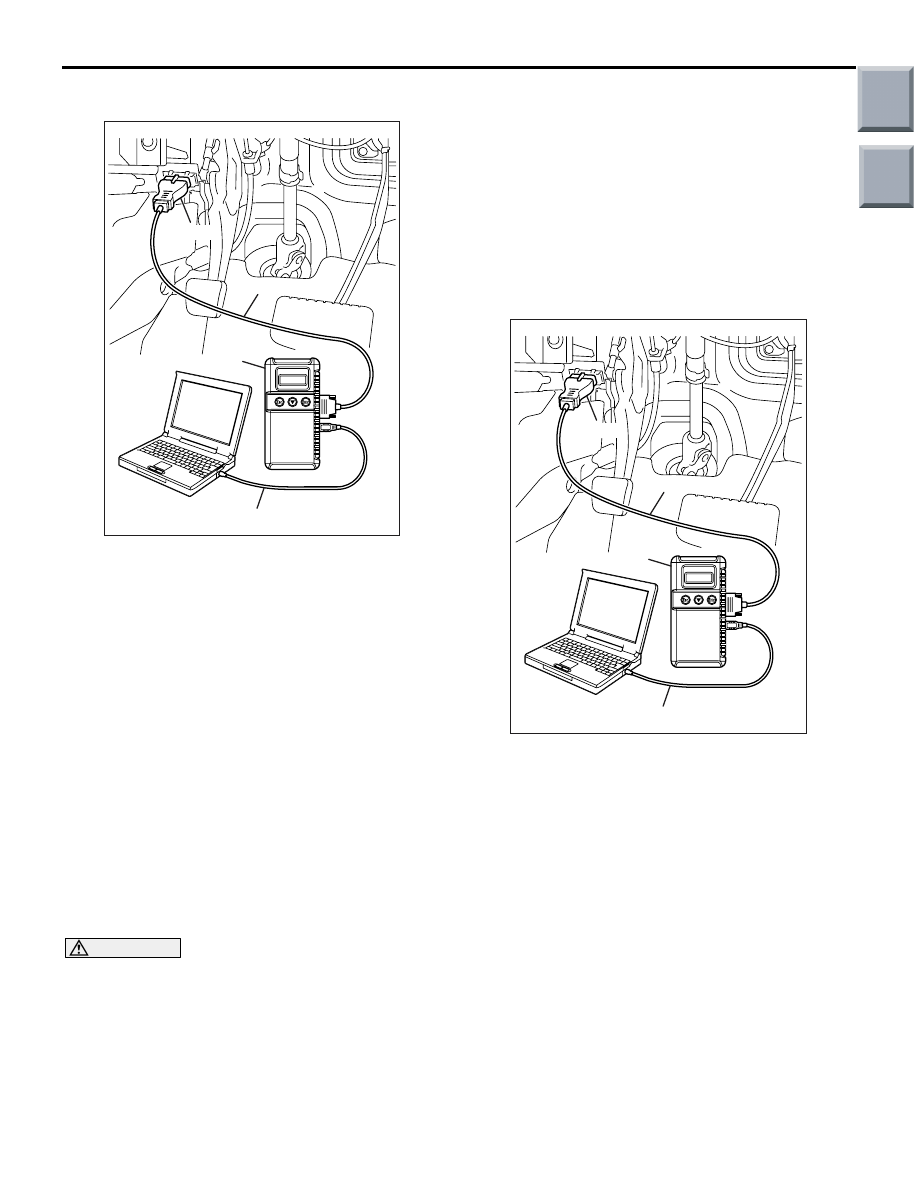Mitsubishi Colt Ralliart. Manual - part 648

ON-VEHICLE SERVICE
ENGINE MECHANICAL <4G1>
11C-12
IGNITION TIMING CHECK
M1111001701235
AK203215
MB991910
16-PIN
MB991827
MB991824
AC
1. Before inspection, set the vehicle to the
pre-inspection condition.
2. Turn the ignition switch to the "LOCK" (OFF)
position and then connect the M.U.T.-III to the
diagnosis connector.
3. Set the timing light to the power supply line
(terminal No.1) of the ignition coil No.1.
4. Start the engine and let it run at idle.
5. Use the M.U.T.-III to measure engine idle speed
and check that it is approximately 750 r/min.
6. Select No. 17 of the M.U.T.-III Actuator test.
7. Check that basic ignition timing is within the
standard value.
Standard value: 5
° BTDC ± 3°
8. If the basic ignition timing is outside the standard
value, inspect the MPI system (Refer to GROUP
13B
− Troubleshooting − Inspection chart for
diagnosis code
).
CAUTION
If the test is not cancelled, a forced driving will
continue for 27 minutes. Driving under this con-
dition may damage the engine.
9. Press the M.U.T.-III clear key (Select a forced
driving cancel mode) to release the Actuator test.
10.Check that ignition timing is at the standard value.
Standard value: approximately 10
° BTDC
NOTE:
.
•
The ignition timing may fluctuate within
±
7
°
BTDC. This is normal.
•
In higher altitude, the ignition timing is more
advanced than the standard value by approxi-
mately 5
°
.
11.Remove the timing light.
12.Turn off the ignition switch and then remove the
M.U.T.-III.
IDLE SPEED CHECK
M1111003501130
AK203215
MB991910
16-PIN
MB991827
MB991824
AC
1. Before inspection, set the vehicle to the
pre-inspection condition.
2. Turn the ignition switch to "LOCK" (OFF) position.
3. Connect the M.U.T.-III to the diagnosis connector.
4. Set the timing light to the power supply line
(terminal No.1) of the ignition coil No.1.
5. Start the engine and let it run at idle.
6. Check that ignition timing is at the standard value.
Standard value: approximately 10
° BTDC
7. Check the idle speed.
Standard value: 750
± 50 r/min
NOTE:
.
•
The idle speed is controlled automatically by
the idle speed control system.
•
When using the M.U.T.-III, select item No. 22
and take a reading of the idle speed.
Main
Index
Group
TOC